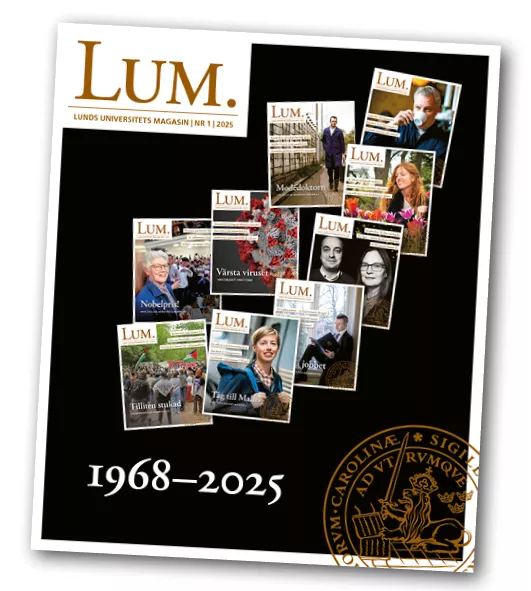The heat and humidity hit you as soon as you enter the new building that has been home to six Mississippi alligators – Bestla, Toke, Gudrun, Kåra, Ivar and Siggi – since last summer. They all have distinct personalities. By studying them, the researchers hope to gain insight into cognitive evolution since the dinosaurs.
Research leader Mathias Osvath had been pondering the idea of studying cognition in extinct dinosaurs for a long time. When he received a major grant from the LMK foundation in 2017, it finally became possible. From the University of Vienna, he recruited Stephan Reber, who had experience of studying alligators at close quarters; they were able to join forces to develop cognitive research on the reptiles.
“When we were then suddenly offered six crocodiles that were spare animals at a crocodile zoo, Crocodiles of the World on the outskirts of Oxford, we didn’t hesitate. We looked into collaborations with zoos and as soon as we had set up an agreement, we hired a van and drove over to fetch them” says Mathias Osvath.
He explains that the facility is built to function as well as possible for the alligators and for research, even though it is part of Ystad zoo. The temperature, humidity, vegetation and UV radiation – everything has been adapted to resemble the Mississippi alligators’ natural environment as far as possible. In particular, the shape of the facility is adapted to the alligators’ needs, to have their own territory for example.
Play rather than food
The alligators have already undergone a number of cognitive tests. For example, researchers had investigated how they perceive objects – do the alligators understand that objects persist when they disappear from view? How quickly do they learn when they are rewarded for various behaviours?
“We also know that they really play, and that it is not only a hunting reflex or curiosity. If they get to choose between food and play, they choose play”, says Mathias Osvath. “That is why they also love cognitive experiments. Our problem when testing the animals is not that they don’t want to take part but rather that they all want to take part at once”, he continues.
However, research on alligators invariably raises the question of how dangerous it is. Crocodiles have the strongest bite in the world, much stronger than that of sharks.
“They don’t see you as food, unlike many other crocodilians. Of the 27 known crocodilian species alive today, the American alligator is the friendliest and easiest to work with”, says Stephan Reber. They can also live together with each other, which enables us to compare results.”
Mathias Osvath, who also conducts research on apes and birds, adds that he much prefers to enter an alligator enclosure than one with chimpanzees – or cassowaries, an aggressive bird species that can easily kill a human.
“When you are on land, the best way to avoid alligators is to jump out of the way, and always to have a bamboo pole between you and them. They are fast, but they tire easily because they are cold-blooded. In the water, however, you don’t stand a chance”, he says. “Still, alligators are not aggressive, and they rarely give you cause to be afraid, but you have to have a healthy respect for them and good safety procedures – a passing bite can have lifelong consequences”.
Understanding cognitive abilities
The main purpose of the research is to understand cognitive development over millions of years; to do this, the researchers must compare the abilities of different species.
“Cognitively, a lot seems to have happened during the age of the dinosaurs. We are therefore interested in finding out how the dinosaurs’ capacity for thought developed. As birds and crocodilians are the closest relatives of the dinosaurs, comparing the results from behavioural experiments on the species enables us to determine which cognitive abilities were present in the first dinosaur and what happened in the development between that one and the last”.
(In the middle of the interview, it is time to feed the alligators. Their food consists of thawed mice and guinea pigs. Stephan Reber enters their enclosure. He is equipped with tongs to hold the food and a thick cane to fend off the alligators if they should come too close. He calls Toke.
“They are being a bit cautious because you are here. They have barely met anyone besides us and the animal wardens in all this time.”
After a while, Toke comes forward and takes a thawed mouse after a little encouragement.
A win-win situation
Both researchers see the location of the research facility in Ystad zoo as an advantage for both Lund University and the zoo itself. The researchers brought the alligators here and are responsible for the scientific expertise, whereas the zoo has taken on the cost of keeping the animals.
“At the same time, there are requirements on zoos to conduct research, which are met with the present arrangement. In addition, all the zoo’s visitors have gained a new, exciting attraction”, says Mathias Osvath.





